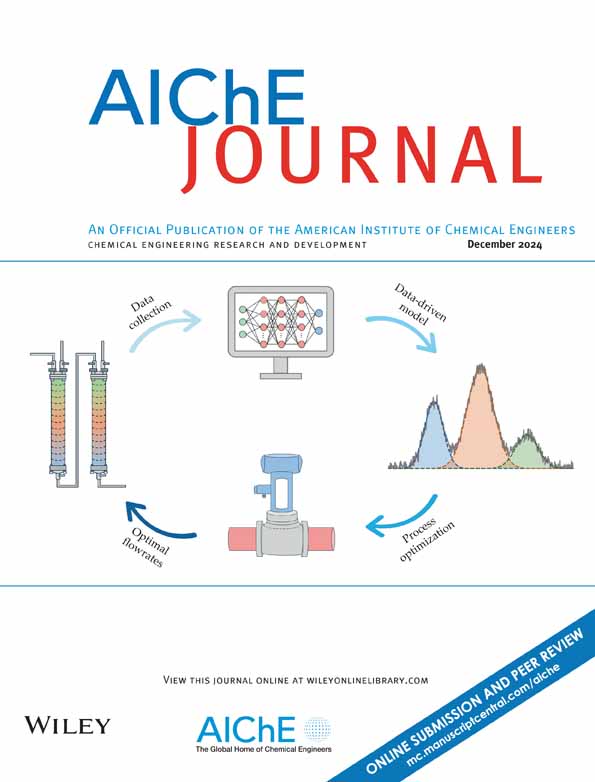Reversible adsorption and sieving of trace NH3 from NH3-H2 fuel cells systems using sulfonated porous polydivinylbenzene
IF 3.5
3区 工程技术
Q2 ENGINEERING, CHEMICAL
引用次数: 0
Abstract
Trace ammonia reversible adsorption and sieving using solid adsorbents present a critical challenge in the practical deployment of ammonia-hydrogen fuel cells. Herein, we design porous polydivinylbenzene (P-PDVB) through one-pot solvothermal polymerization without additional templates. Subsequently, solvent-induced network swelling was performed to achieve deep sulfonation of the P-PDVB using chlorosulfonic acid, resulting in P-PDVB-SO3H-x, which possess large specific surface areas, abundant micro-mesoporosity, and high acid site densities. Notably, P-PDVB-SO3H-x demonstrate superior performance for the selective capture and sieving of NH3 from an N2/H2/NH3 mixture, outperforming most previously reported NH3 adsorbents. Thus, P-PDVB-SO3H-x can serve as an efficient adsorbent for the selective removal of trace ammonia from ammonia-hydrogen fuel cell systems, significantly improving both the efficiency and longevity of the fuel cells. This work highlights the potential of P-PDVB-SO3H-x as a promising candidate for enhancing ammonia-hydrogen fuel cell performance, paving the way for further exploration of advanced adsorbent materials in energy applications.求助全文
约1分钟内获得全文
求助全文
来源期刊

AIChE Journal
工程技术-工程:化工
CiteScore
7.10
自引率
10.80%
发文量
411
审稿时长
3.6 months
期刊介绍:
The AIChE Journal is the premier research monthly in chemical engineering and related fields. This peer-reviewed and broad-based journal reports on the most important and latest technological advances in core areas of chemical engineering as well as in other relevant engineering disciplines. To keep abreast with the progressive outlook of the profession, the Journal has been expanding the scope of its editorial contents to include such fast developing areas as biotechnology, electrochemical engineering, and environmental engineering.
The AIChE Journal is indeed the global communications vehicle for the world-renowned researchers to exchange top-notch research findings with one another. Subscribing to the AIChE Journal is like having immediate access to nine topical journals in the field.
Articles are categorized according to the following topical areas:
Biomolecular Engineering, Bioengineering, Biochemicals, Biofuels, and Food
Inorganic Materials: Synthesis and Processing
Particle Technology and Fluidization
Process Systems Engineering
Reaction Engineering, Kinetics and Catalysis
Separations: Materials, Devices and Processes
Soft Materials: Synthesis, Processing and Products
Thermodynamics and Molecular-Scale Phenomena
Transport Phenomena and Fluid Mechanics.
 求助内容:
求助内容: 应助结果提醒方式:
应助结果提醒方式:


